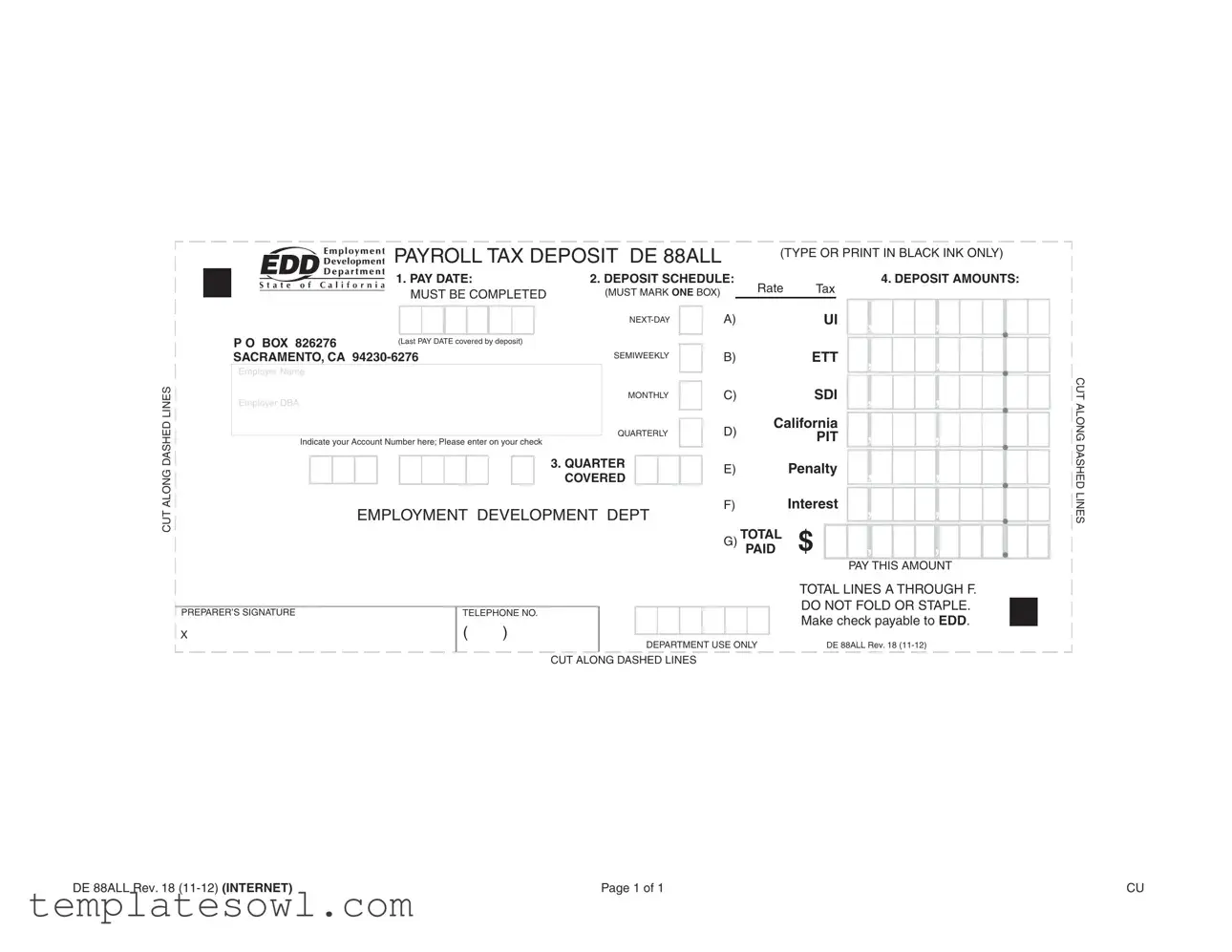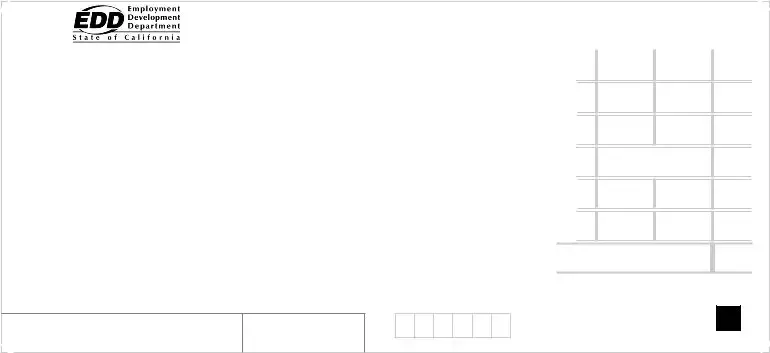What is the DE 88 form and who needs to use it?
The DE 88 form is a payroll tax deposit form used in California. Employers, particularly those who pay state payroll taxes, need to use this form. It helps report and pay various payroll taxes, including Unemployment Insurance (UI), Employment Training Tax (ETT), State Disability Insurance (SDI), and Personal Income Tax (PIT). Completing this form accurately is essential for compliance with California tax laws.
What information is required when filling out the DE 88 form?
When completing the DE 88 form, certain critical information is necessary. You'll need your pay date, the deposit schedule you’re following (next-day, semiweekly, monthly, or quarterly), your employer name, and your account number. In addition, the form requires total amounts to be paid for various types of taxes, including penalty and interest, if applicable. Make sure all entries are clear and accurate to avoid complications.
How do I determine my deposit schedule?
Your deposit schedule depends on the amount of payroll taxes you report in previous periods. If you consistently report a lower amount, you may qualify for a monthly schedule. Those with larger payrolls might have to follow a semiweekly or next-day deposit schedule. If you're unsure, you can check the previous year's filing or consult with a tax professional for guidance.
When is the DE 88 form due?
The due date for the DE 88 form depends on your deposit schedule. For next-day deposits, the form is due the day after your pay date. Employers using the semiweekly schedule must submit the form by the following Wednesday or Friday, depending on the pay period. Monthly and quarterly deposit deadlines are outlined by the California Employment Development Department (EDD). Always check the latest EDD guidelines for specific dates.
What happens if I file the DE 88 form late?
Filing the DE 88 form late can result in penalties and interest charges. The EDD will assess penalties based on the amount due, and late fees can accumulate over time. It’s crucial to submit your form and payment on time to avoid unnecessary costs. If you anticipate a delay, contact the EDD to discuss your situation; they may offer guidance or options based on your circumstances.
Can I pay online instead of using the DE 88 form?
Yes, employers have the option to pay payroll taxes online through the EDD’s e-Services for Business platform. This can be a more convenient option, allowing you to make payments electronically and often receive quicker confirmation. However, if you choose to pay using the DE 88 form, ensure you follow all instructions carefully and send it to the right address.
What should I do if I make a mistake on the DE 88 form?
If you realize you’ve made an error while filling out the DE 88 form, don’t panic. Make corrections clearly on the form. If possible, write a note indicating that it has been corrected. In some cases, you may need to file an amended return with the EDD. Always keep copies of your submissions in case of future discrepancies.
Who can I contact for assistance with the DE 88 form?
If you have questions or need help with the DE 88 form, reach out to the California Employment Development Department. Their representatives can provide guidance and clarification regarding any aspect of the form or payroll tax deposits. Alternatively, consider consulting a tax professional for personalized advice tailored to your business needs.

